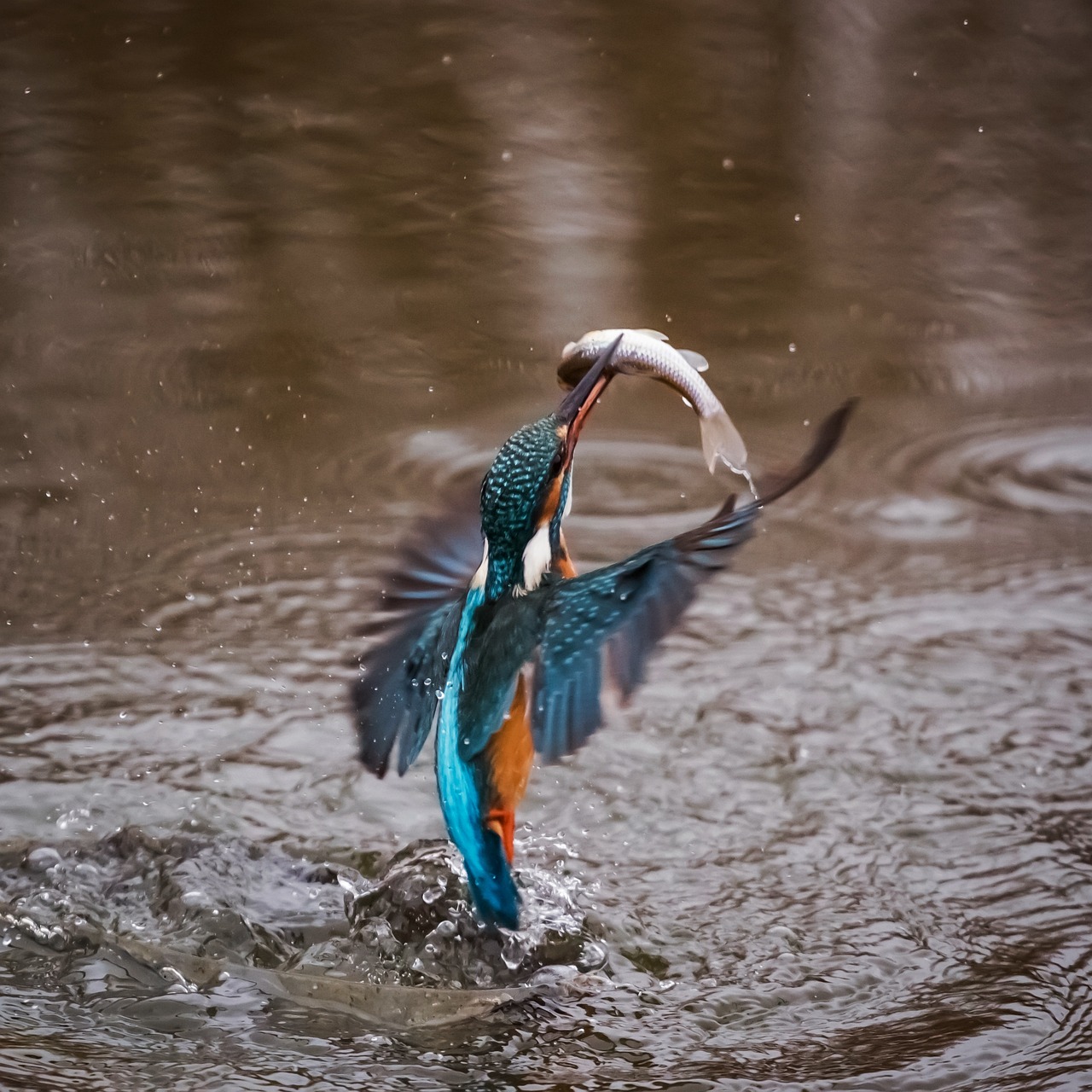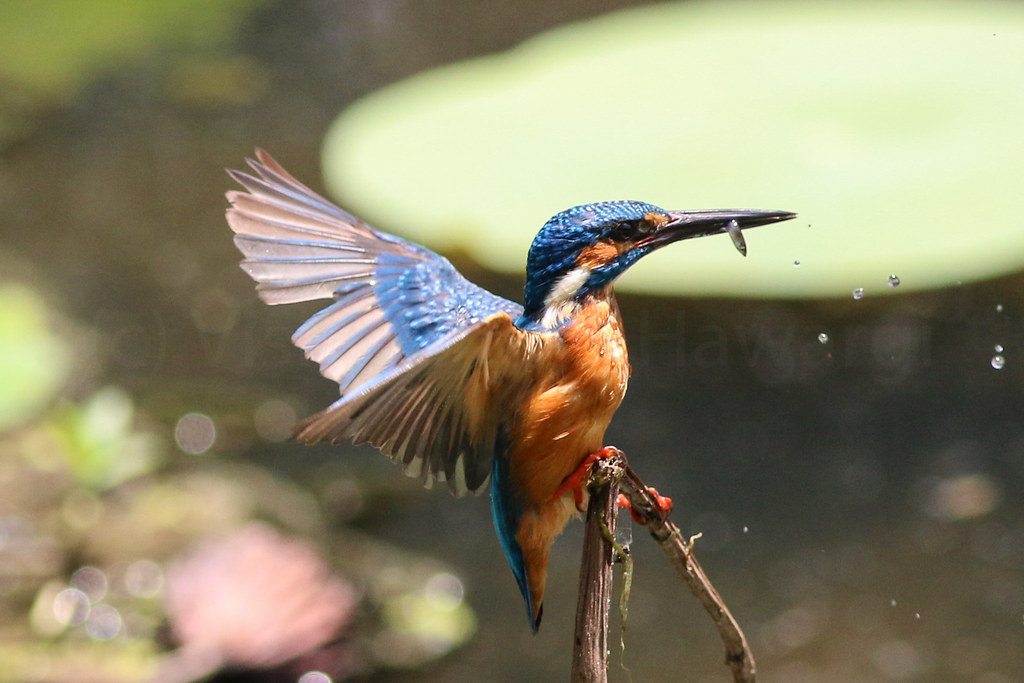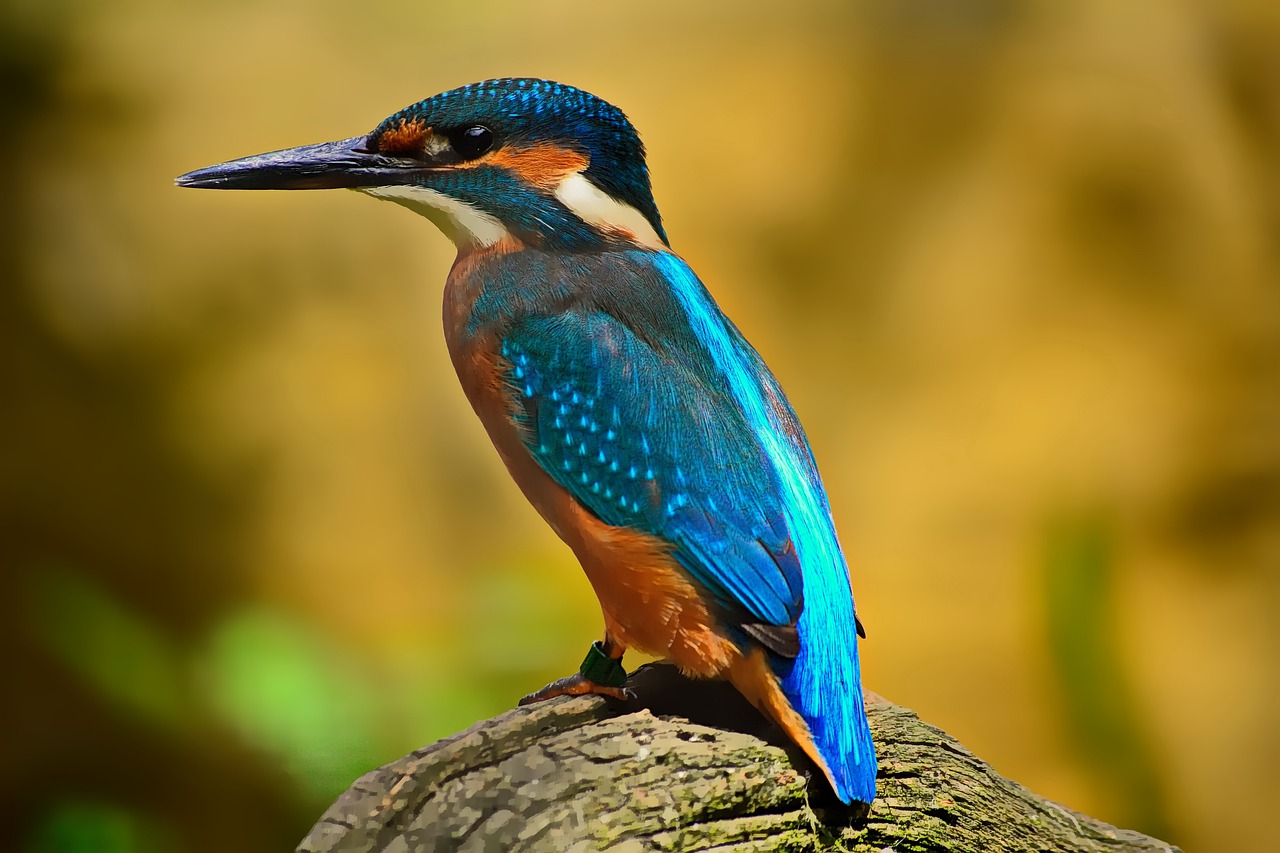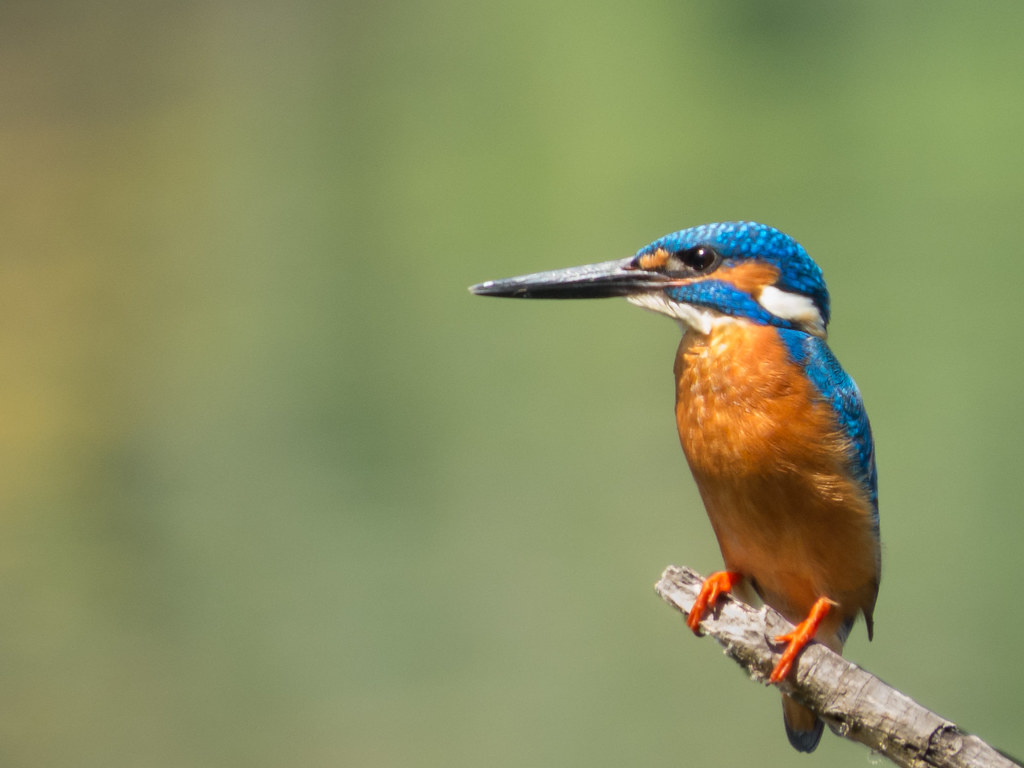Kingfisher
Alcedo atthis
On the quiet canals of the Delta you’ll definitely catch sight of a colorful little bird, plunging bravely into the water. The kingfisher is only 17 – 19.5 cm in length, has a wingspan is about 24 – 28 cm and weighs around 34 – 46 g. This small acrobat has vividly blue plumage, speckled in dark tones, as well as sky blue. Under the sunlight its wings shine in tones of green, and only its chest and abdomen contrast in shades of cream and reddish-orange. Its long, sharp beak is perfect for plunging and catching small fish and invertebrates. The bird needs to consume about 60% of its own eight in food every day. It lives in many parts of Romania but only around wetlands, lakes with fresh water and coastal areas with brackish waters. The species is dependent on high, earthen banks, usually avoiding ones with vegetation. Here, they excavate burrows for nesting, that can be up to a meter in length. A pair of kingfishers will take turns excavating over the course of several days.
Mating season starts in early spring and the female will lay the eggs around April. The bird is usually sedentary in the region, though it may go further south in particularly harsh winters.
This spectacular little bird has become the image of the Romanian Ornithological Society since its founding in 1990.

Photographer: Bergadder

Photographer: Wishknot
Pe canalele liniștite ale Deltei veți vedea cu siguranță o pasăre colorată, care se aruncă cu curaj în apă. Marționul are doar 17 – 19,5 cm lungime, are o anvergură a aripilor de aproximativ 24 – 28 cm și cântărește în jur de 34 – 46 g. Acest mic acrobat are un penaj albastru viu, pătat în tonuri închise, precum și albastru deschis. Sub lumina soarelui, aripile îi strălucesc în tonuri de verde, iar doar pieptul și abdomenul contrastează în nuanțe de crem și portocaliu-roșcat. Ciocul său lung și ascuțit este perfect pentru scufundarea și prinderea peștilor mici și a nevertebratelor. Pasărea trebuie să consume aproximativ 60% din propriile opt în hrană în fiecare zi. Trăiește în multe părți ale României, dar numai în jurul zonelor umede, lacurilor cu apă dulce și zonelor de coastă cu ape salmastre. Specia este dependentă de malurile înalte, de pământ, evitându-le de obicei pe cele cu vegetație. Aici, ei excapă vizuini pentru cuibărit, care pot avea o lungime de până la un metru. O pereche de kingfishers vor excava pe rând pe rând pe parcursul mai multor zile.
Sezonul de împerechere începe primăvara devreme și femela va depune ouăle în jurul lunii aprilie. Pasărea este de obicei sedentară în regiune, deși poate merge mai spre sud în ierni deosebit de grele.
Această pasăre spectaculoasă a devenit imaginea Societății Ornitologice Române încă de la înființarea acesteia în 1990.
Pescăruș Albastru
Alcedo atthis
Eisvogel
Alcedo atthis
Auf den ruhigen Kanälen des Deltas werden Sie mit Sicherheit einen bunten kleinen Vogel sehen, der sich mutig ins Wasser stürzt. Der Eisvogel ist nur 17 – 19,5 cm lang, hat eine Flügelspannweite von 24 – 28 cm und wiegt etwa 34 – 46 g. Dieser kleine Akrobat hat ein leuchtend blaues Gefieder, gesprenkelt in dunklen Tönen, sowie himmelblau. Im Sonnenlicht leuchten seine Flügel in Grüntönen, und nur Brust und Bauch heben sich in Creme- und Rötlich-Orange-Tönen ab. Sein langer, scharfer Schnabel eignet sich perfekt zum Eintauchen und Fangen von kleinen Fischen und Wirbellosen. Der Vogel muss täglich etwa 60 % seiner eigenen acht Nahrungseinheiten verzehren. Er lebt in vielen Teilen Rumäniens, aber nur in der Nähe von Feuchtgebieten, Seen mit Süßwasser und Küstengebieten mit Brackwasser. Die Art ist auf hohe, geerdete Ufer angewiesen und meidet in der Regel solche mit Vegetation. Hier graben sie Höhlen zum Nisten, die bis zu einem Meter lang sein können. Ein Eisvogelpaar gräbt abwechselnd über mehrere Tage hinweg.
Die Paarungszeit beginnt im zeitigen Frühjahr, und das Weibchen legt die Eier etwa im April ab. Der Vogel ist in der Regel sesshaft in der Region, kann aber in besonders strengen Wintern auch weiter nach Süden ziehen.
Dieser spektakuläre kleine Vogel ist seit der Gründung der Rumänischen Ornithologischen Gesellschaft im Jahr 1990 zu deren Aushängeschild geworden.

Photographer: Timoschluter

Photographer: Gkrishna63
Sur les canaux tranquilles du delta, vous apercevrez certainement un petit oiseau coloré, plongeant courageusement dans l’eau. Le martin-pêcheur ne mesure que 17 à 19,5 cm de long, a une envergure d’environ 24 à 28 cm et pèse environ 34 à 46 g. Ce petit acrobate a un plumage bleu vif, tacheté de tons sombres, ainsi que de bleu ciel. Sous la lumière du soleil, ses ailes brillent dans des tons de vert, et seuls sa poitrine et son abdomen contrastent dans des tons de crème et d’orange rougeâtre. Son bec long et pointu est parfait pour plonger et attraper de petits poissons et invertébrés. L’oiseau a besoin de consommer environ 60% de son propre poids en nourriture chaque jour. Il vit dans de nombreuses régions de Roumanie, mais uniquement autour des zones humides, des lacs d’eau douce et des zones côtières aux eaux saumâtres. L’espèce dépend de hautes berges en terre, évitant généralement celles avec de la végétation. Ici, ils creusent des terriers pour la nidification, qui peuvent mesurer jusqu’à un mètre de long. Un couple de martins-pêcheurs fouillera à tour de rôle pendant plusieurs jours.
La saison des amours commence au début du printemps et la femelle pondra ses œufs vers avril. L’oiseau est généralement sédentaire dans la région, bien qu’il puisse aller plus au sud lors d’hivers particulièrement rigoureux.
Ce petit oiseau spectaculaire est devenu l’image de la Société roumaine d’ornithologie depuis sa fondation en 1990.
Martin-pêcheur d'Europe
Alcedo atthis
Try using these colors:
Remember, there are always more colors than you think you see!







